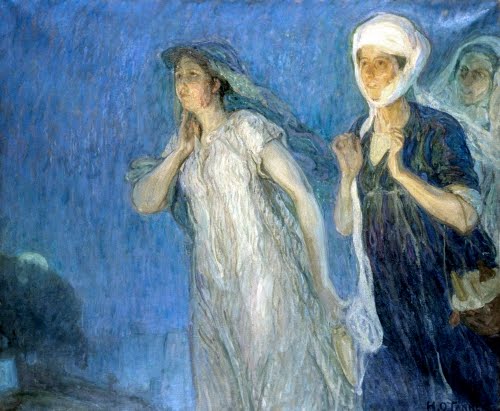African American History Month 2017: Henry O. Tanner
Today’s post in my series about the artists and artworks in the exhibit Two Centuries of Black Art features Henry O. Tanner. I really like Tanner’s paintings of his late period after he had lived in France, because they’re a combination of American realism and French Impressionism.
 |
| Henry O. Tanner (1859–1937, United States), Three Marys at the Tomb, 1910. Oil on canvas, 42 1/8" x 50" (107 x 127 cm). © 2017 The University Galleries, Fisk University, Nashville, Tennessee. Image courtesy of the Los Angeles County Museum of Art, 1976. (8S-21851) |
After I read about the horrible racist attacks on Tanner while a student—including being tied to an easel “crucifixion” style by printmaker Joseph Pennell (1857–1926), as mentioned in Pennell’s autobiography—at the Pennsylvania Academy of Fine Arts, I can understand why many African American artists chose to study in Europe where racism was not as prevalent.
Tanner was born in Philadelphia, son of a Methodist-Episcopal priest (and later bishop). His spiritual upbringing would heavily influence his post-France paintings. He was inspired to become a painter by the 1876 Centennial Exposition in Philadelphia, which featured great art from around the world. He enrolled at the Pennsylvania Academy in 1879 and for two years was mentored by the great American realist Thomas Eakins (1844–1916). Settling in Paris in 1891, he became greatly influenced by the palette of the Impressionists and the broad, flat areas of brilliant color of Post-Impressionists such as Pierre Bonnard (1867–1947) and Paul Sérusier (1863–1927).
Tanner began producing religious subjects in the 1890s. Works such as this are a great example of the combination of influences on Tanner’s work, including the Impressionist palette, the realism with psychological impact of Eakins, and the stark contrasts in dark and light that were a feature of Eakins’ work, as well. The French government bought one of his religious works in 1897, making him the first African American artists to attain an international reputation.
The series wraps up tomorrow with the work of Margaret Burroughs.
Other posts in this series:


Comments